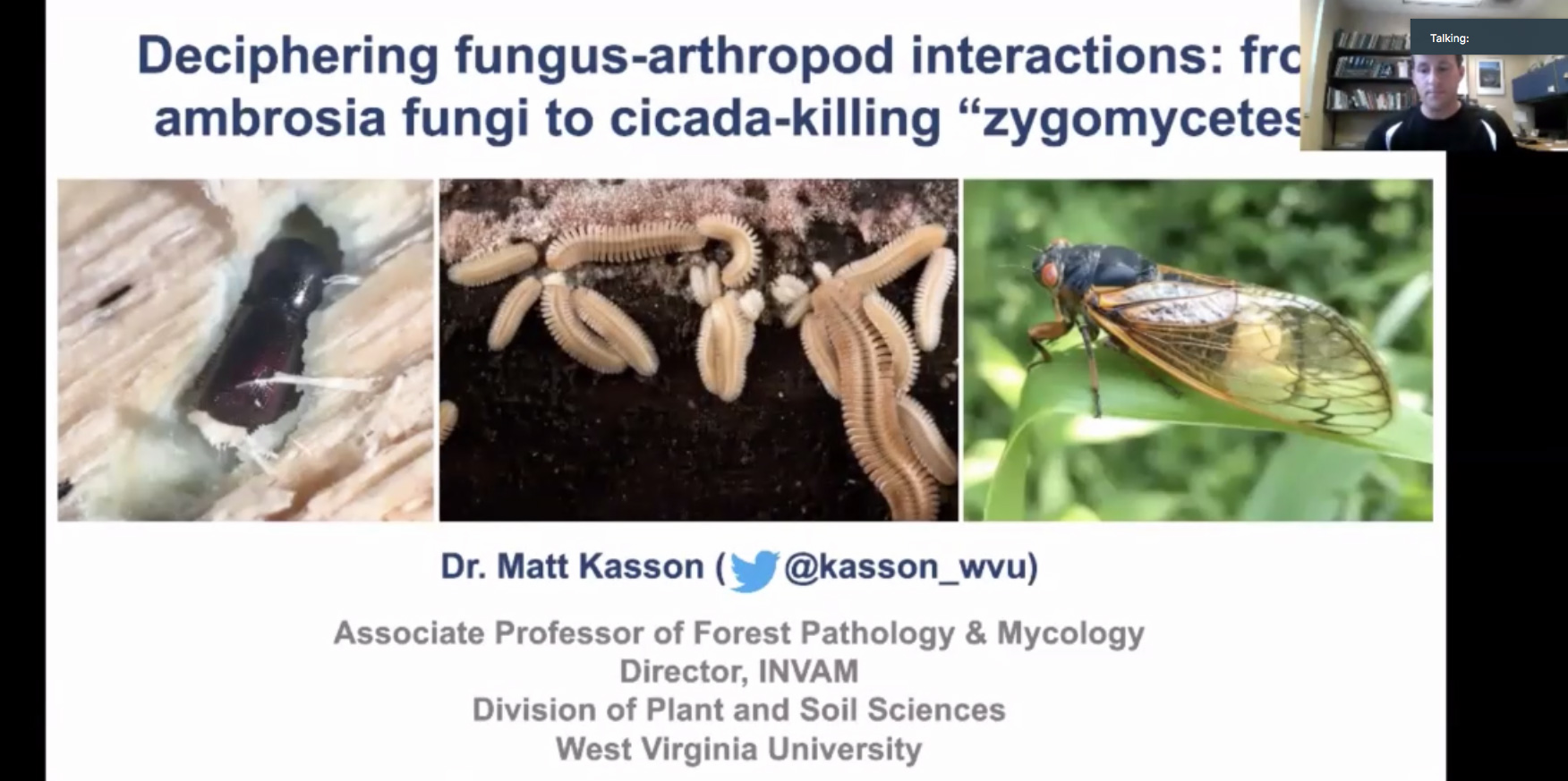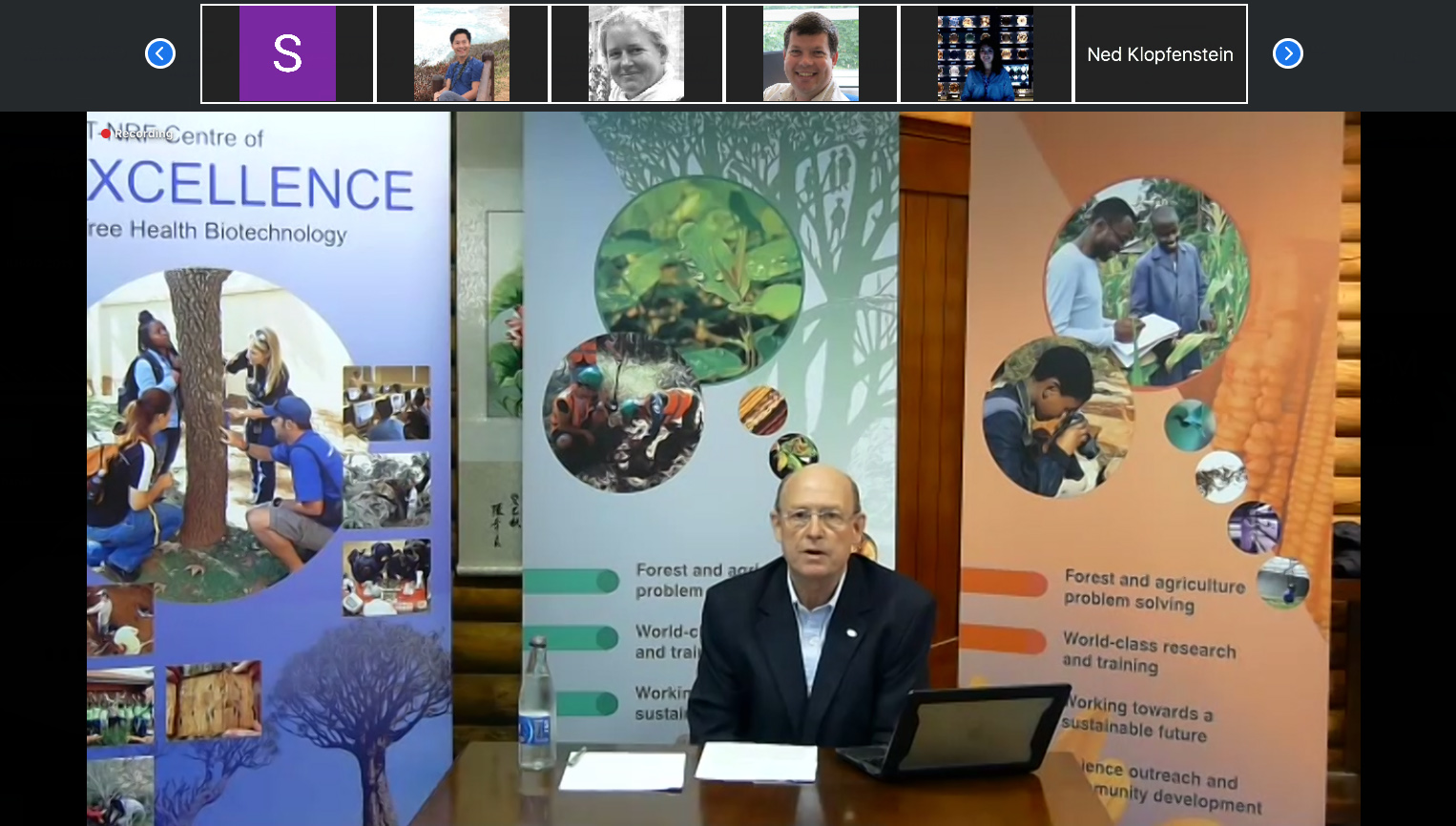Dr Matthew Kasson presents the second FABI International Seminar 2020-06-30
FABI’s second monthly International Seminar had Assistant Professor of Forest Pathology at West Virginia University Dr Matthew Kasson present a talk entitled: Deciphering fungus-arthropod interactions: from ambrosia fungi to cicada-killing “Zygomycetes". This new initiative has proven to be very popular and again attracted more than 150 participants from across the globe. His research focuses on fungal biocontrol, canker diseases of trees and shrubs, and arthropod-fungus interactions. His work on arthropod-fungus interactions includes fungus-farming ambrosia beetles, fungivorous millipedes, and entomopathogens of various insects including cicadas. Understanding the functional roles of fungi in many arthropod-fungus interactions has proven difficult especially for understudied systems.
His presentation encompassed three case studies: Ambrosia symbiosis; Exploring fungal diversity and function in an untested system: fungivorous millipedes; and Exploring behavioural modifications of cicadas by obligate fungal parasites
Matt explained how his research group was using Micro-CT Imaging to study the head associated structures of Ambrosia beetles.Their studies focus on the Xyleborini group that are ecologically and economically important due to the number of devastating tree diseases associated with them. Studies of the Flavodon and Fusarium species associated with these beetles.
A chance encounter with entomologist and millipede taxonomist Dr Paul Marek sparked an interest in studying fungal diversity of fungi on which the Brachycybe millipedes (feather millipedes) feed. It was found they maintain a culturable fungal symbiont - a white rot Polypore - on which they rear their young.
The last part of his talk focussed on his interest in exploring behavioural modifications of cicadas by obligate fungal parasites. Periodic cicadas emerge en masse in the eastern USA every 13 or 17 years. Massospora is a fungus with 13 obligate, sexually-transmitted pathogens of 21 Cidada species worldwide. These cause behaviour modification in cicadas, resulting in accelerated host activity and hypersexual behaviour thereby maximising fungal spore dispersal. His studies revealed the psychoactive tryptamine, Psilocybin was among the most abundant alkaloids detected in infected annual cicadas but not present in periodic cicadas. Periodic cicadas were instead found to have the amphetamine Cathinone present.
Please join us for the free Monthly FABI International Seminar. Find ot more information by clicking here.




